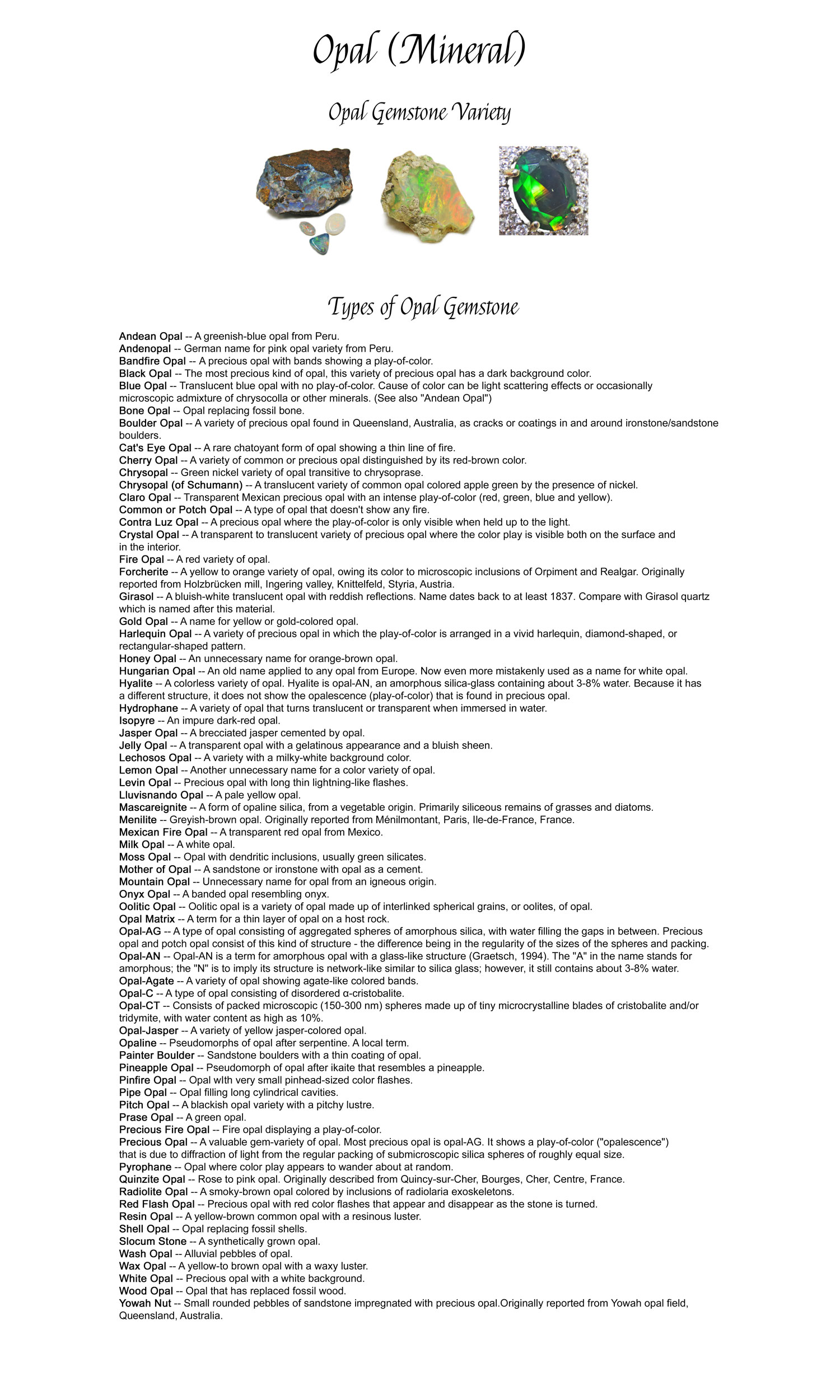
Virtually all scientific references, including the acclaimed Dana's System of Mineralogy, categorize opal together with minerals, even though it is not truly a mineral but a mineraloid. Technically a mineral must have a crystal structure which opal, with its amorphous structure, lacks.
Opal is formed by silica-bearing waters seeping into various rock cracks and cavities at relatively low temperatures (up to 400°F/200°C). During dry periods most of the water evaporates and leaves solid deposits of silica behind in these empty spaces in underground sedimentary rock. Though opal can be found as nodules, stalactite masses, veinlets, and encrustations in most kinds of rocks, it is most commonly found with limonite, sandstone, rhyolite, marl, and basalt. Opal can also form pseudomorphs, a mineral formed by chemical or structural change of another substance while retaining its original external shape. Opal can be pseudomorphs of wood and other fossil organic matter and after gypsum, calcite, feldspars, and some other minerals.
"Play-of-color" is used to describe the various colors found in opal and how they change when viewed from different angles. Most opal found is common opal, hence the name, which is white opal with little to no play-of-color. Occasionally, though, silica spheres are stacked in an orderly pattern allowing light waves to travel between the spheres and to bend and break up into the colors of the rainbow. The size, density, and pattern of the spheres determines the colors seen in opal.
Though the gemstone opal is the only variation of the mineral opal, the gemstone has a wide variety of types. Many of the types of opals have been named by dealers and often reference the color, composition, or origin of the stone. Some of these are commonly used while many others are known but rarely used.
Specs
| Chemical Formula | SiO2 · nH2O | Composition | Hydrous silicon dioxide. The water can range from 3% to 21% of the total weight, but is usually between 6% to 10%. |
|---|---|---|---|
| Color | Colorless, white, yellow, orange, red, purple, blue, green, gray, brown, and black. These are some of the base colors of opal. Opal can display different colors when viewed from different directions or when the light source is moved. This phenomenon, called play-of -color, gives opal different color flashes. Opal also occurs multicolored and banded. | ||
| Crystal System | Amorphous | Hardness | 4.5-6.5 |
| Transparency | Transparent to opaque | Luster | Usually vitreous, but may also be pearly, waxy, or resinous. |
